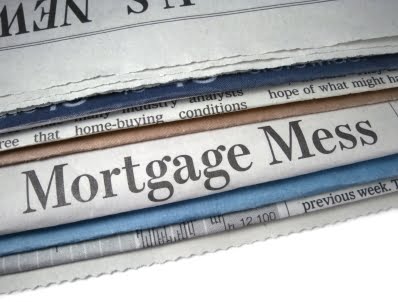The current administration proposes that Fannie Mae and Freddie Mac be gradually dissolved within ten years by one of three methods:
- Government-guaranteed mortgages will be available only to finance home purchases by low- and moderate-income families, a task to remain the duty of a much-downsized Federal Housing Administration (FHA). This method will reduce the percentage of mortgages guaranteed by Fannie, Freddie and the FHA — currently around 90% of all mortgages.
- Mortgage default insurance premiums (MIPs) for government-guaranteed mortgages will be set at a high enough level so private mortgage insurers (PMIs) will be able to compete, thus eliminating the need for a government guarantee.
- The government will act as a reinsurer of PMIs in case of their failure, for which the government will receive a premium paid by the PMIs.
It is now up to Congress to decide which of the three methods, or which combination of the three, will be implemented. On the mortgage guarantee issue, the “no on everything” contingent now seems to agree that change is needed.
first tuesday take: The administration properly presumes the private sector will step up and fill the void created in the government’s absence. In the past 30 years, Wall Street has shown time and again it can put mortgages on the street at any size and in any volume we need. The private mortgage market was responsible for producing the majority of bad loans during the housing bubble, which is proof they can find plenty of money without the help of Fannie and Freddie.
More important to the discussion of replacing Fannie and Freddie, the PMI industry is fully capable of guaranteeing mortgage performance on a level equal to that of the government guarantee. PMIs understand the reserves that must be set up as they have done so before (unlike Fannie and Freddie), and they will certainly step up to the plate if they have the chance to make more money.
In order to facilitate a smooth transition, however, the housing market must first recover some normalcy before implementation of the changes to phase-out the government guarantee. Fannie and Freddie’s participation will inevitably dissolve as PMIs take over the mortgage market, but now is just not the time to put that process into practice. We must first clean out the bad, nonperforming mortgages through foreclosure.
In the interim, the federal government is fulfilling its purpose during a financial crisis by providing credit to the mortgage-backed bond (MBB) market by guaranteeing, thus reducing the interest rate on mortgages that would otherwise be charged without the guarantee — whether government or private. The private market cannot stay afloat on its own until home sales volume and prices stabilize for at least two years and private MBB investors regain their confidence and recapitalize, probably by 2014. [For more information regarding the role of Fannie and Freddie, see the February 2011 first tuesday article, Frannie’s future is at stake.]
If Congress wants to jump-start this period of homeownership stabilization, judicial cramdowns for underwater mortgages with loan-to-value (LTV) levels of 94% or more must be restored, as is permitted for investors and businesses both big and small. Cramdowns will make today’s negative equity homeowners solvent and viable contributors to our California recovery. [For more information regarding cramdowns, see the January 2011 first tuesday article, The inconsistent cramdown policy.]
Re: “Administration seeks smaller federal role in mortgages” from the NY Times




















Until this country wakes up and realizes that the only way we can get out of the WHOLE that we have dug is to END H.U.D., Fannie Mae and also Freddie Mac!
I know of a house here in Hemet, CA. that was foreclosed and at the TIME of the TRUSTEE SALE the AMOUNT owed was $350,000 and FREDDIE MAC was the purchaser and acquired the property for ONLY $250,000! However, that wasn’t the worse part, a PRIVATE PARTY INVESTOR purchased the property from FREDDIE MAC for ONLY $27,500! This was a BRAND NEW HOME that had NEVER BEEN LIVED IN and the INVESTOR obtained a PRIVATE PARTY NOTE of $60,000 to make improvements on the property! The property address? 881 Curry, Hemet, CA. 92545!
Now, how in the world can I or anyone else try to close a SHORT SALE when the BANKS are receiving TARP MONEY to keep the property from being able to close escrow? Example, a HOUSE that I had listed and I also represented a BUYER in Rancho Mirage was in the process of being foreclosed by CHASE and the BUYER agreed to purchase the PROPERTY for the APPRAISED VALUE of $355,000! However, Chase informed me that their Broker’s Price Opinion came in at $435,000 and that they were determined to take nothing less. I informed them that the property was not worth the $435,000 and was basically a TARE DOWN and THREE WEEKS later, I was informed that CHASE reconsidered my offer. ONLY, it was too late and my BUYER ONLY NEEDED 24 hours to close the escrow. The property was foreclosed and there was an I.R.S. tax lien of over $48,000 on the property. BY THE WAY, THE THIRD QUARTER PROFIT LAST YEAR FOR CHASE WAS ONLY $5.5BILLION AND THEY SURE DID NOT EARN THE MONEY BY GENERATING NEW LOANS NOR OPENING NEW ACCOUNTS! Instead, they received the money from TARP FUNDS for NOT CLOSING ESCROWS !
I have a client that saw a CONDO in CARLSBAD, California for sale and wanted to buy the condo unit. However, the CONDO, being located only 3 blocks from the beach, was ideal. THE problem was that H.U.D. is currently in the process of foreclosing the UNIT and is requiring the property be purchased by a LOW INCOME FIRST TIME BUYER and the PURCHASE PRICE is ONLY $148,856 and this condo is ONLY 6 years old and is located in a complex with 21 units and 20% of the project MUST be sold as a FIRST TIME LOW INCOME BUYER and the rest MUST be sold RETAIL for the FAIR MARKET VALUE of $600,000! However, because of the HUD pricing, an appraiser will LOWER the value of the balance of the units to an average market value of about $450,000! WHERE IS THE FAIR MARKET VALUE IN THIS? HOW ABOUT THE FACT THAT ALL OF THE HOMES WITHIN A ONE-MILE RADIUS ARE ALSO GOING TO BE FACED WITH A LOWER VALUE BECAUSE OF HUD?
If these three examples are from just one BROKER, how many more are there that show the FRAUD that this country is currently faced with from H.U.D.
In what scenario would an investor or business (big or small) be granted a judicial cramdown?
Good work,I have always liked first tuesday,and it’s principals that founder Fred Crane put in place.